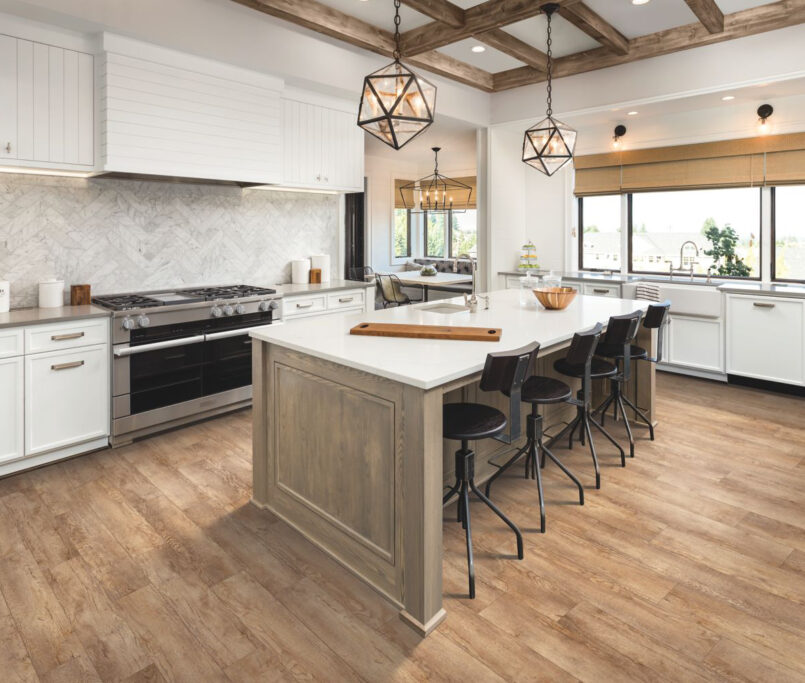Hardwood floor installation is a transformative process that can significantly enhance the beauty and value of your home. Whether you’re looking to install solid hardwood flooring, engineered hardwood, or tongue and groove flooring, the key to a successful installation lies in careful planning, the right tools, and expert technique. At 50 Grit Flooring in Loveland, OH, we take pride in providing comprehensive guidance and high-quality flooring materials to ensure your hardwood flooring project is a success.
Understanding the Basics of Hardwood Floor Installation
When it comes to hardwood floor installation, there are several key considerations to keep in mind. The type of wood flooring you choose, the installation method, and the condition of the subfloor are all critical factors that will impact the final result. Below, we’ll walk you through the essential steps and tips to ensure your hardwood flooring is installed correctly and looks stunning for years to come.
Selecting the Right Hardwood Flooring
Before diving into the installation process, it’s important to choose the right type of wood flooring for your space. At our hardwood flooring store, we offer a wide variety of solid hardwood floors and engineered hardwood flooring options.
- Solid Hardwood Floor: This type of flooring is made from a single piece of wood and offers timeless beauty and durability. It’s ideal for areas without moisture issues.
- Engineered Hardwood Flooring: Engineered hardwood consists of a core of hardwood or plywood with a layer of hardwood veneer on top. It’s more resistant to moisture and temperature changes, making it suitable for basements and areas with radiant heat.
Each type of flooring material has its own unique benefits, and your choice will depend on factors such as budget, room location, and aesthetic preferences.
Preparing for Installation
Preparation is key to a successful hardwood floor installation. Before you begin, make sure you have all the necessary tools and materials, including a flooring nailer, knee pads, a tape measure, and a saw. Additionally, allow your wood flooring to acclimate to the room’s temperature and humidity levels by leaving the boxes open for several days.
- Subfloor Preparation: The subfloor must be clean, dry, and level. Any imperfections or debris can cause issues during installation, so take the time to thoroughly inspect and prepare the subfloor.
- Layout Planning: Plan the layout of your flooring carefully. Start by measuring the room and determining the direction in which the boards will run. Typically, hardwood floors are installed perpendicular to the floor joists for added stability. It’s also important to leave an expansion gap around the perimeter of the room to accommodate the natural expansion and contraction of wood.
Installation Methods
There are several methods for installing hardwood flooring, and the best one for your project will depend on the type of flooring and subfloor.
- Nail-Down Method: This is the most common method for solid hardwood floors. Using a flooring nailer, you’ll drive a nail through the tongue side of each board at a 45-degree angle, securing it to the subfloor. Be sure to install the face of the boards with the tongue side facing out, and drive a nail into each floor joist for maximum stability.
- Staple-Down Method: Similar to the nail-down method, this approach uses staples instead of nails to secure the boards. It’s often used for engineered hardwood flooring.
- Glue-Down Method: This method is typically used for engineered hardwood floors, especially on concrete subfloors. Adhesive is applied to the subfloor, and the boards are pressed into place.
- Floating Floor Method: In this installation method, the flooring is not attached to the subfloor. Instead, the boards are fitted together using a locking mechanism. This is a popular option for DIY enthusiasts as it’s relatively simple and can be used with both engineered and tongue and groove flooring.
Step-by-Step Installation Guide
- Measure and Cut: Begin by measuring the room and cutting the first row of boards to fit. Place the first board with the tongue side facing the wall and secure it in place with face nails. Make sure to cover the expansion gap between the board and the wall.
- Install the Boards: Continue installing the boards row by row. Use the flooring nailer to drive a nail at a 45-degree angle through the tongue side of each board. Stagger the end joints by at least 6 inches to create a more natural and stable appearance.
- Face Nail Where Needed: In areas where the flooring nailer can’t reach, such as along the walls, you’ll need to face nail the boards. This involves driving a nail directly through the face of the board into the subfloor.
- Install Around Obstacles: If your room has obstacles like pipes or doorways, carefully measure and cut the boards to fit around them. A jigsaw can be useful for cutting intricate shapes.
- Finish the Edges: Once all the boards are installed, remove the spacers used for the expansion gap and install baseboards or quarter-round molding to cover the gap and create a finished look.
Considerations for Radiant Heat Systems
If you have a radiant heat system installed, it’s important to choose an appropriate hardwood flooring material and installation method. Engineered hardwood flooring is typically better suited for radiant heat systems due to its dimensional stability. Additionally, the floating floor method is often recommended to allow for natural expansion and contraction without stressing the flooring.
Why Hire a Professional?
While installing hardwood floors can be a rewarding DIY project, it’s also a time-consuming and labor-intensive task that requires precision and expertise. Hiring a professional ensures that your hardwood floors are installed correctly, with minimal risk of mistakes or damage. At 50 Grit Flooring, our team has the experience and knowledge to handle any hardwood floor installation, delivering beautiful results that stand the test of time.
Hardwood floor installation is a significant investment in your home’s aesthetic and value. With careful planning, the right tools, and high-quality materials, you can achieve a stunning hardwood floor that will last for generations. Whether you’re considering solid wood, engineered hardwood, or tongue and groove flooring, 50 Grit Flooring in Loveland, OH, is here to guide you through every step of the process. From selecting the perfect flooring to ensuring a flawless installation, we’re committed to helping you create the home of your dreams.





